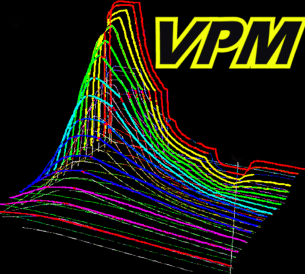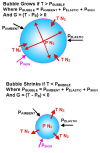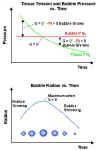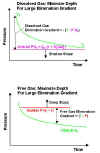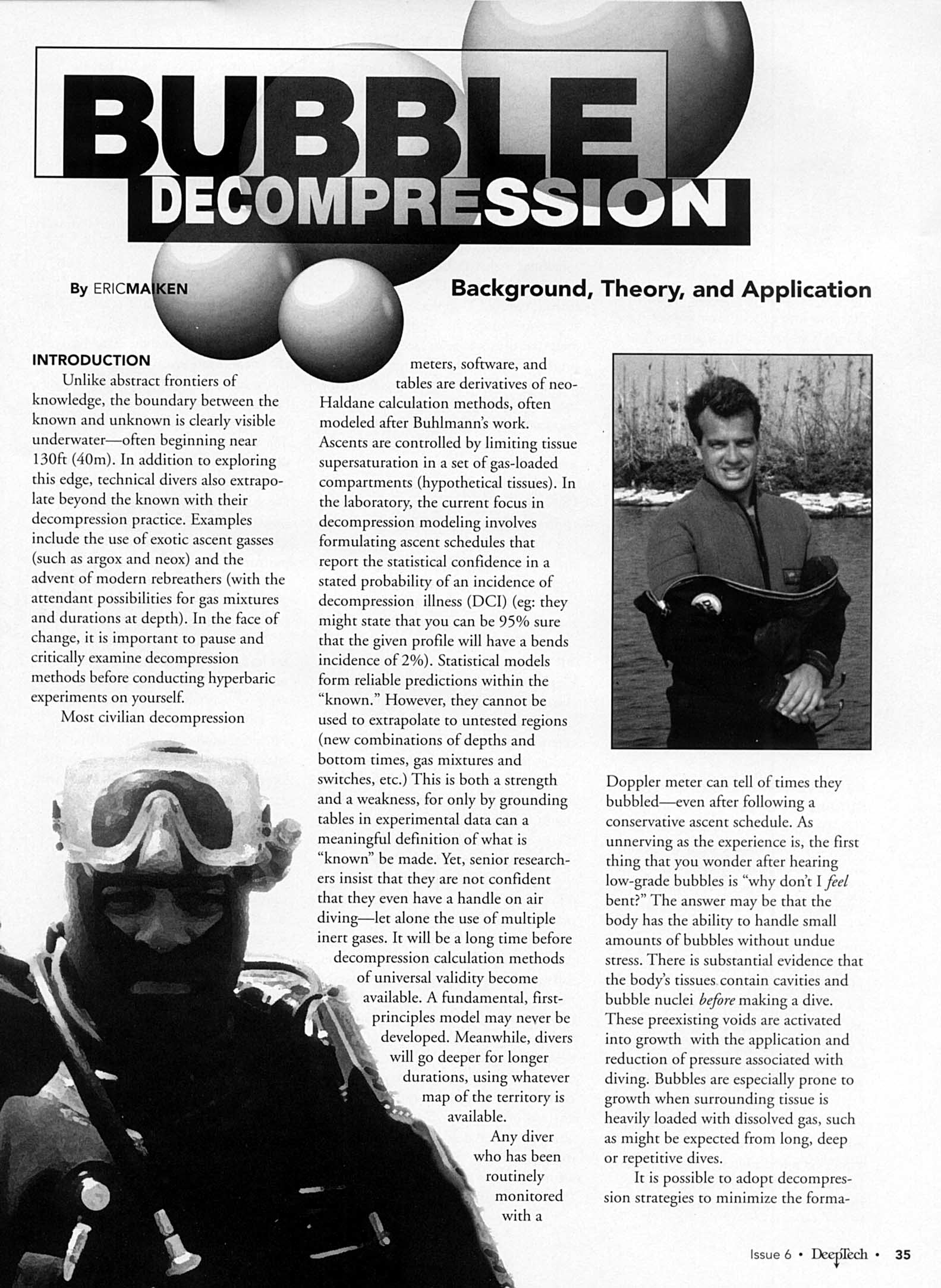
|
Bubble
Decompression |
|
This article was published in a different form in DeepTech, Issue 6. It summarizes about one-third of my Bubble Decompression Strategies presentation at the tek95 conference. | |
|
| |
IntroductionUnlike abstract frontiers of knowledge, the boundary between the known and unknown is clearly visible underwater--often beginning near 130 ft (40 m). In addition to exploring this edge, technical divers also extrapolate beyond the known with their decompression practice. Examples include the use of exotic ascent gasses (such as argox and neox) and the advent of modern rebreathers with their attendant possibilities for gas mixtures and duration at depth. In the face of change, it is important to pause and critically examine decompression methods before conducting hyperbaric experiments on yourself. This article is the first of two concerning how the presence of bubbles in a diver's tissues affects decompression. After covering the theoretical basis for bubble decompression models in this first article, we will go on to see how bubble ideas can be incorporated into real-world decompression scenarios in part II. Most civilian decompression meters, software, and tables are derivatives of neo-Haldane calculation methods, often modeled after Buhlmann's work. Ascents are controlled by limiting tissue supersaturation in a set of gas-loaded compartments (hypothetical tissues). In the laboratory, a current focus in decompression modeling involves formulating ascent schedules that report the statistical confidence in a certain probability of decompression illness (DCI). For example, a schedule might state that you can be 95% sure that the profile will have a bends incidence of 2%. Statistical models form reliable predictions within the "known." However, without a fundamental model, statistics cannot be used to extrapolate to untested regions (new combinations of depths and bottom times, gas mixtures and switches, etc). This is both a strength and a weakness, for only by grounding tables in experimental data can a meaningful definition of what is "known" be made. Yet, senior researchers insist that they are not confident that they even have a handle on air diving--let alone the use of multiple inert gases. It will be a long time before decompression calculation methods of universal validity become available. A fundamental, first-principles model may never be developed. Meanwhile, divers will go deeper for longer durations, using whatever map of the territory is available. Any diver who has been routinely monitored with a Doppler meter can tell of times they bubbled--even after following a conservative ascent schedule. As unnerving as the experience is, the first thing that you wonder after hearing low-grade bubbles is "why don't I feel bent?" The answer may be that the body has the ability to handle small amounts of bubbles without undue stress. There is substantial evidence that the body's tissues contain cavities and bubble nuclei before making a dive. These preexisting voids are activated into growth with the application and reduction of pressure associated with diving. Bubbles are especially prone to growth when surrounding tissue is heavily loaded with dissolved gas, such as might be expected following long, deep or repetitive dives. It is possible to adopt decompression strategies to minimize the formation and growth of bubbles. While this might be the objective of all decompression schedules, the surprising result is that bubble elimination strategies are often contrary to the recommendations of traditional diving tables and therefore seem counter-intuitive. For instance, decompression stops called for by bubble models are much deeper (often within a few ata of bottom) than corresponding neo-Haldane tables. We will see why this is so when we consider the physics of bubbles and look into the details of some bubble models.
A Short History of the Bubble ModelsThe idea that divers could develop bubbles, yet not display overt symptoms of the bends is nearly as old as the sport. Behnke, in the early 1950s, termed these asymptomatic cases silent bubbles. A decade later, Brian Hills of Australia introduced a method for minimizing the formation and growth of bubbles by advancing the "thermodynamic" calculation of decompression tables, culminating in the publication of the classic book Decompression Sickness (Ref. 1) in 1977. Therein, he gave clear discussions of concepts such as the inherent unsaturation of tissue (oxygen window) in addition to detailing his method for decompressing divers at zero supersaturation. Hills' tables stipulated initial stops far deeper than the US Navy (USN) profiles. Hills believed that the USN's tables encouraged formation of bubbles via a long ascent to a relatively shallow first stop and that the long ten-foot stop served as therapy to reduce bubbles formed by the extreme first pull upward. Though Hills' ideas for decompression methods were firmly based in experiment, experience and theory, the resulting unconventional ascent schedules met with derision. The introduction of Doppler monitoring techniques in the late 1960s substantiated Hills' belief that divers were in fact bubbling on the USN tables. Although hopes that Doppler might be used as real-time feedback for decompression haven't materialized, the idea still holds that the prevention of bubbles will minimize risk of DCI. Following Hills, researchers at the University of Hawaii postulated that a common basis of all DCI might be that the insult initiated in aqueous tissues that comprise the bulk of living creatures. They conducted a series of experiments that resulted in formulation of the Varying Permeability Model (VPM) (Ref. 2). As in Hills' model, VPM tables call for deep first stops to keep gas in solution so that it can be eliminated through the circulation rather than flow into bubbles. Wienke extended the VPM to include repetitive and multi-day diving in the Reduced Gradient Bubble Model (RGBM) (Ref. 3). A major equipment manufacturer slated the RGBM for implementation in diving meters in the early 1990's, though a product was never released. Currently, a number of modeling efforts incorporate bubble-mechanical principles into the calculation of decompression schedules. Models under development at Duke University, NASA, and commercial diving firms incorporate both bubble mechanics and statistical analysis of DCI data. Technical divers already employ decompression procedures consistent with bubble models ad-hoc in their planning (see Richard Pyle's prescription for deep stops Ref. 4 ). Yet, the justification of these methods is often given in terms of operational concerns and neo-Haldane viewpoints rather than bubble mechanics.
Physiological IssuesDivers are not passive systems like the inanimate gelatin used in laboratory models for developing the VPM. The ability of the body to react to stimuli and stresses hinders deterministic decompression models. The physiological complexities of this feedback cycle are daunting. For instance, the biochemical reactions to the presence of gas bubbles can compound problems facing a DCI victim by initiating clotting and complement activation. The bubbles themselves can form obstructions in arteries, with severe consequences to the nervous system. On a less urgent level, even high partial pressures of oxygen can trigger responses such as the reduction of blood perfusion. The reduced flow to tissues diminishes out-gassing to the circulatory system, resulting in larger tissue tensions, encouraging bubble growth. A comprehensive approach to building effective decompression tables requires input from a wide range of specialties. Even if we step back from the goal of building a universal model, it is still possible to make recommendations for decompression procedures that are consistent with minimizing the occurrence and growth of bubbles. This is where the fundamental perspective of physics can provide guidance for avoiding bubble formation and growth. Most importantly, mechanistic recommendations must be weighed against physiological, medical, and operational concerns. | |
